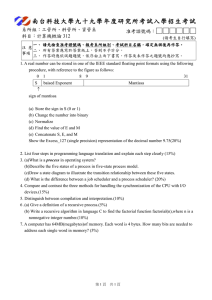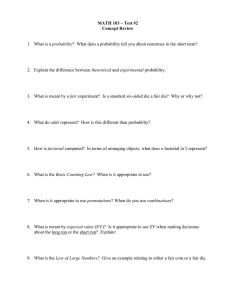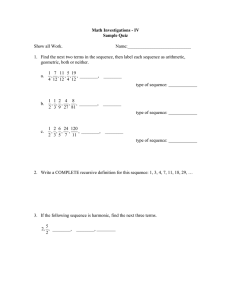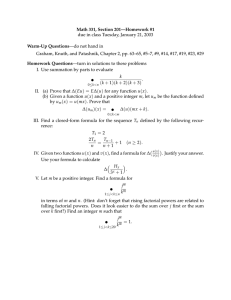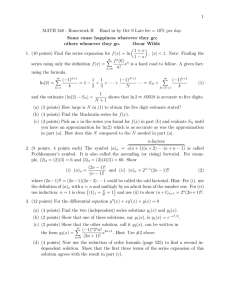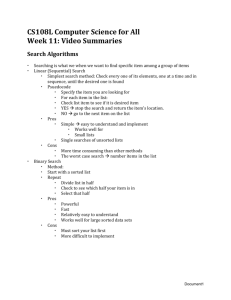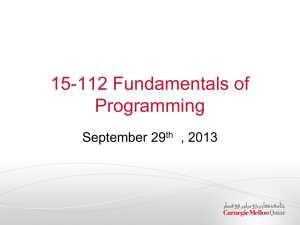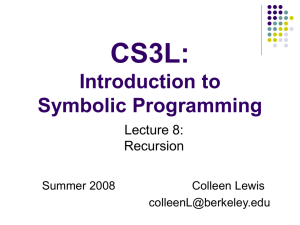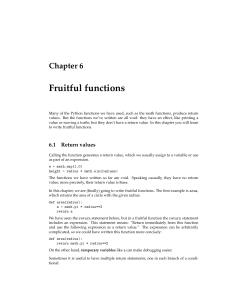Recursion
advertisement
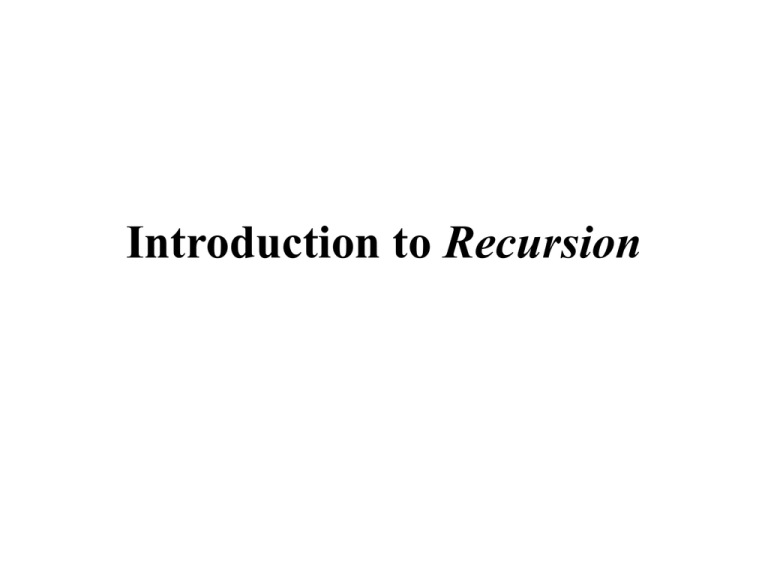
Introduction to Recursion Divide and Conquer The recursive property • Recursive problem = a problem that is defined with one or more smaller problems of the same kind • Example: the factorial of the number n Example • Now, suppose that you know (e.g., someone told you) that: • Then, we can solve the original problem (10!) very easily: The Recursive Property A problem X(n) has the recursive property if: • The problem X(n) can be solved using the solution of one or more smaller problems X(n−1), X(n−2), ... • A sufficient number of base (simple) cases of the problem can be solved readily. Example The problem factorial(n) can be solved using the solution of one smaller problem factorial(n−1) Because one smaller problem is used to solve factorial(n), we need one base case The base (simple) case n = 0 of the factorial problem can be solved readily: Recursion • a special divide and conquer problem solving technique • Wait for someone else to solve the problem of size n − 1, size n − 2, etc... • When you receive the solution for the problem of size n − 1, size n − 2, etc..., you will then use these solutions to solve the original problem. Definition • When you implement the algorithm as a Java method, the resulting method will invoke itself !!! • We call these kind of methods: recursive methods Procedure to develop a recursive problem solving algorithm 1. Find out which smaller problems you need to use to solve the original problem 2. Find out how to use the solutions of the smaller problems to solve the original problem. 3. Find the solutions for a sufficient number of the base cases. Computing n! (1) • The method should have the following header: • The input parameter n is an integer • The output value (= n!) is also an integer value Computing n! (2) • Which smaller problem do we use to solve factorial(n): • How do we use the solution sol1 to solve factorial(n): • Because we used factorial(n−1), we will need the solution for 1 base case: Computing n! (3)
